How To Fix Resolution On Windows 10
Display Resolution Greyed Out Windows 10
Screen resolution, also known as pixels per inch (PPI), refers to the number of pixels within an area. Between two screens of the same size but with different resolutions, the one with the higher PPI allows you to see more of what you're working on.
Common Screen Resolution in Windows 10 and What They Mean
- 1,366 x 768 – High Definition
- 1,920 x 1,080 – Full High Definition
- 1,920 x 1,200 – Wide Ultra Extended Graphics Array
- 3,840 x 2,160 – Ultra High Definition, also known as 4K
How to Adjust Screen Resolution
Changing your Windows 10 computer's screen resolution should be a straightforward process. Simply right-click on the Desktop, then choose Display Settings > Advanced Display Settings > Screen Resolution.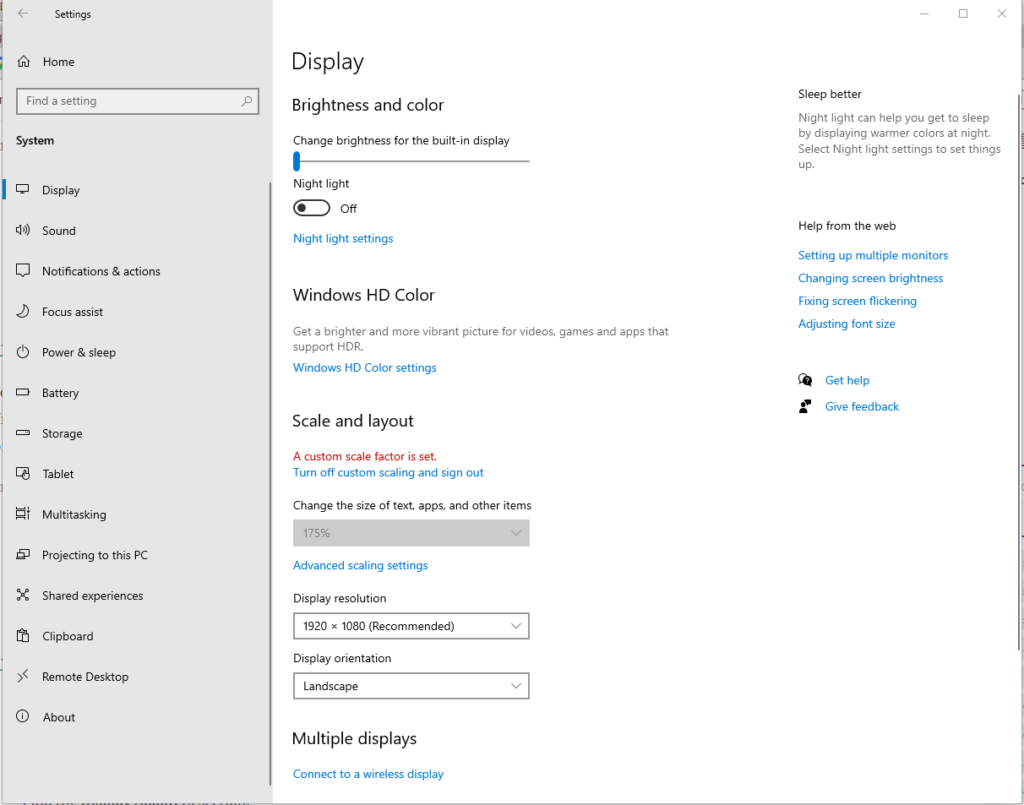
Choose which screen resolution you want to choose from the options, then click OK. Your computer will show you a preview of how your chosen screen resolution will look like and you can choose whether to keep it or revert back to the previous resolution.
However, several Windows 10 users reported that they can't change the screen resolution because the options are greyed out. According to the reports, the Windows 10 screen resolution is greyed out after users installed an update. They can no longer click on the Display settings, so they are unable to change screen resolution on Windows 10.
Other Windows 10 users, on the other hand, reported that they can't even access the drop-down because the window freezes or crashes all of a sudden. There are also some odd instances where the user was able to complete the process of changing the resolution, only to have the screen revert back to the old resolution.
This adjust screen resolution problem is not a critical system issue because this does not affect the running of the Windows 10 operating system. But it is a huge hassle for those who are working in graphic design, video editing, or other visual-intensive work.
Why Screen Resolution on Windows 10 Is Grayed Out?
Based on the reports, most users who encountered this error has recently upgraded to Windows 10 or installed system updates. This causes incompatibility between your driver and operating system, causing your computer to disable some functions related to the misconfigured drivers.
Although this is the most possible scenario, we can't ignore other unwanted elements that might be causing your screen resolution options to be greyed out. These factors include:
- Malicious software
- Corrupted driver
- Junk files
- Corrupted system files
- System glitch
What to Do If You Can't Change Screen Resolution
To rule out these factors from the equation, let's try these basic troubleshooting steps first:
- Restart your computer. If you just completed installing an update, you need to restart your computer for the changes to apply.
- Clean up your system. Unnecessary files can clog your system, resulting in a whole slew of errors and performance issues. Use Outbyte PC Repair to remove junk files from your PC completely.
- Scan your computer for possible virus or malware infection. Get rid of the infected files, if there are any, using your antivirus software.
- Install all available updates under Windows Update. Press Windows and search for Windows Update. And then, click the Check for updates button.
After doing all these steps, restart your computer once again and check if you can now change your screen resolution. If not, try your luck with the methods below:
Fix #1: Update Display Driver.
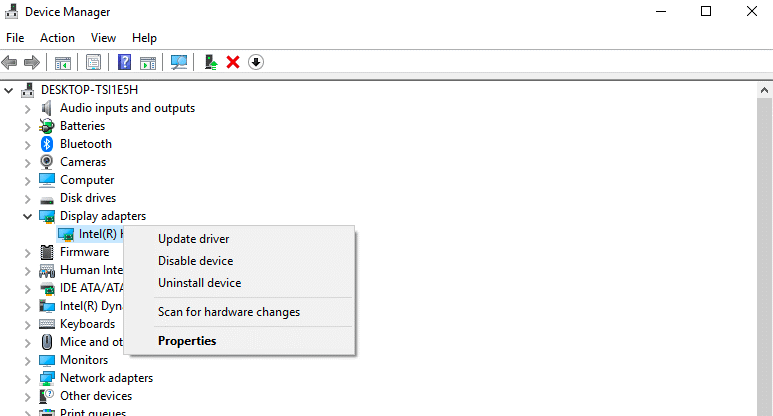
Since this problem is mostly due to an outdated or corrupted display adapter or graphics driver, the first thing you need to do is update it. You need to uninstall the graphics driver first, then reinstall the latest version.
To do this:
- Press Windows to launch the Start menu, then choose Device Manager from the list.
- Under Device Manager, click on Display Adapters to expand it.
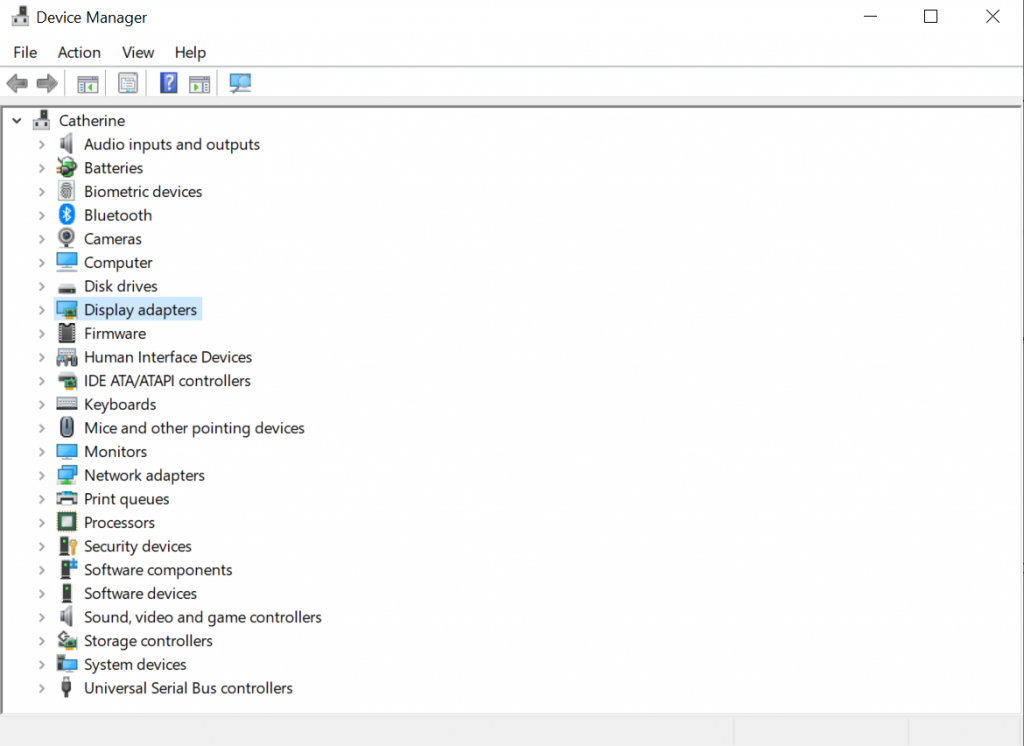
- Choose the name of your display driver, then click Uninstall.
- Click Yes when the confirmation dialog pops up.
- Follow on-screen instructions to complete the uninstallation process.
- Once the graphics driver has been uninstalled, restart your computer. Windows 10 should automatically try to install the display or graphics driver when the operating system loads.
If your computer fails to install the latest display or graphics driver, you can check the manufacturer's website and download it from there. Install the graphics driver manually on your computer and check if updating the driver has fixed your screen resolution problem.
Fix #2: Enable GPU Scaling.
GPU allows computers to scale the images on the screen, so that they fit the display vertically and horizontally. Most graphics card, such as Intel, NVIDIA, and AMD, support this option. However, you need to access the graphics card control panel to enable this feature.
Intel:
- Click on the Intel HD Graphics located in the Notification Area of the Taskbar.
- Click Display.
- Click Maintain Display Scaling, then hit the Apply button.
- Restart your Windows 10 device for the changes to take effect.
AMD:
- Open your AMD Radeon control panel from the Taskbar.
- Click Display.
- Look for GPU Scaling and turn it on.
- Restart your Windows 10 PC.
NVIDIA:
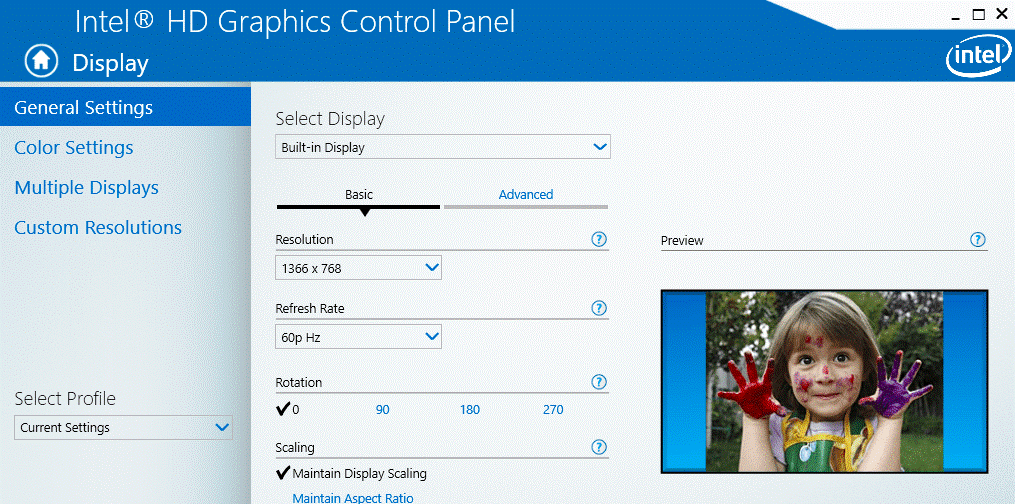
- Click NVIDIA from the Taskbar to open its settings.
- Click on Adjust Desktop Size and Position from the left menu.
- Select your scaling mode: Full Screen, Aspect Ratio, or no scaling.
- Choose GPU in the dropdown under Perform scaling on.
- Save your settings and restart your system.
Fix #3: Reset Your PC.
Another option is to reinstall Windows 10 to reset all your settings. You don't have to worry about your files because using the Reset This PC option does not erase any of your data. You also don't need to rely on installation media to perform the reset, although the process might take some time.
To perform a factory reset on your Windows 10 device:
- Click Start > Settings (cog-like icon).
- Choose Update & security, then click Recovery from the left menu.
- Click the Get Started button under the Reset this PC option.
- Choose whether you want to keep all your files or delete them.
- Hit Next > Reset.
Wait for the reset process to be completed, which could take a while. Once done, all aspects of your device should function properly, including your screen.
Fix #4: Check If You Installed the Correct Display Driver
Still can't adjust screen resolution in Windows 10? Then check if you have installed the correct display driver. Most often than not, it is impossible to change the screen resolution without using the correct display driver. This is especially true if you have just switched from Windows 7 to Windows 10.
To check if you are using the correct display driver, do the following:
- Press the Windows key + R to launch the Run utility.
- Type devmgmt.msc into the search field and hit Enter to launch Device Manager.
- Now, all the installed device drivers will be shown on your screen.
- Expand the Display Driver section. If you find your current display, then it means you have installed the correct driver software. Otherwise, you will see the basic display driver software provided by Microsoft. In such a case, you need to reinstall the display driver by using a driver updater tool.
Fix #5: Install the Most Recent Windows Update
Microsoft regularly rolls out Windows updates with new features and different security improvements. They also come with bug fixes for the previous Windows versions. Installing these updates will sometimes resolve issues related to your display driver.
To install the most recent update and hopefully be able to adjust screen resolution Windows 10, do the following:
- Press Windows key + I simultaneously to launch Settings.
- Go to the Update and Security section and hit the Check for Updates button.
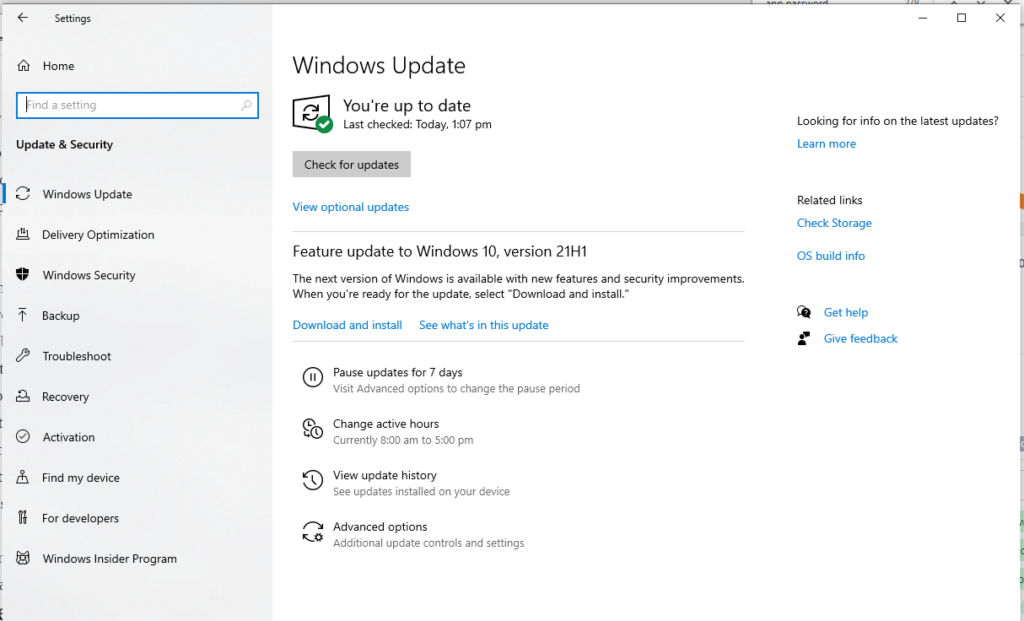
- Windows will now begin downloading and installing the latest Windows updates from Microsoft's server.
- Follow on-screen instructions to complete the update process.
- Once done, reboot your device to apply the changes.
Fix #6: Have Your Display Checked by a Technician
If you suspect that the graphics card is not the reason why you're seeing a grayed out in display, try bringing your device to a technician and have it checked. It could be an issue with the system display itself.
In this scenario, even if you update driver software or run the display program in compatibility mode, the error won't be fixed if the cause is physical damage.
Final Notes
Having the correct screen resolution plays a huge role in how things are displayed on your screen. Adjusting your screen resolution Windows 10 should be a simple process that can be done right there on the Desktop. However, sometimes you can't change the screen resolution because the window freezes or crashes, or the options are grayed out. If this is the case, just follow our troubleshooting guide above to fix this issue.
To adjust screen resolution in Windows, just go to Display Settings and select Advanced Display Settings. From here, you can easily make tweaks and change screen resolution. But if you cannot change screen resolution because the resolution setting is grayed out, know that you have many solutions.
First, restart your computer. Sometimes, a quick restart is all it takes to allow you to change screen resolution in Windows 10. Also, try cleaning up your system and get rid of junk files or scanning your system for any possible malware or virus infection.
If none of the steps works, update your display driver, enable GPU scaling, reset your PC, check if you installed the correct display adapter driver, or install the latest Windows update.
Do you know other ways to change screen resolution in Windows 10? Do you know other reasons why the resolution setting is grayed out? Let us know in the comments!
 If you're running into errors and your system is suspiciously slow, your computer needs some maintenance work. Download Outbyte PC Repair for Windows or Outbyte Antivirus for Windows to resolve common computer performance issues. Fix computer troubles by downloading the compatible tool for your device.
If you're running into errors and your system is suspiciously slow, your computer needs some maintenance work. Download Outbyte PC Repair for Windows or Outbyte Antivirus for Windows to resolve common computer performance issues. Fix computer troubles by downloading the compatible tool for your device.

How To Fix Resolution On Windows 10
Source: https://softwaretested.com/windows/how-to-fix-a-windows-10-screen-resolution-that-is-grayed-out/
Posted by: kochapans1983.blogspot.com

0 Response to "How To Fix Resolution On Windows 10"
Post a Comment